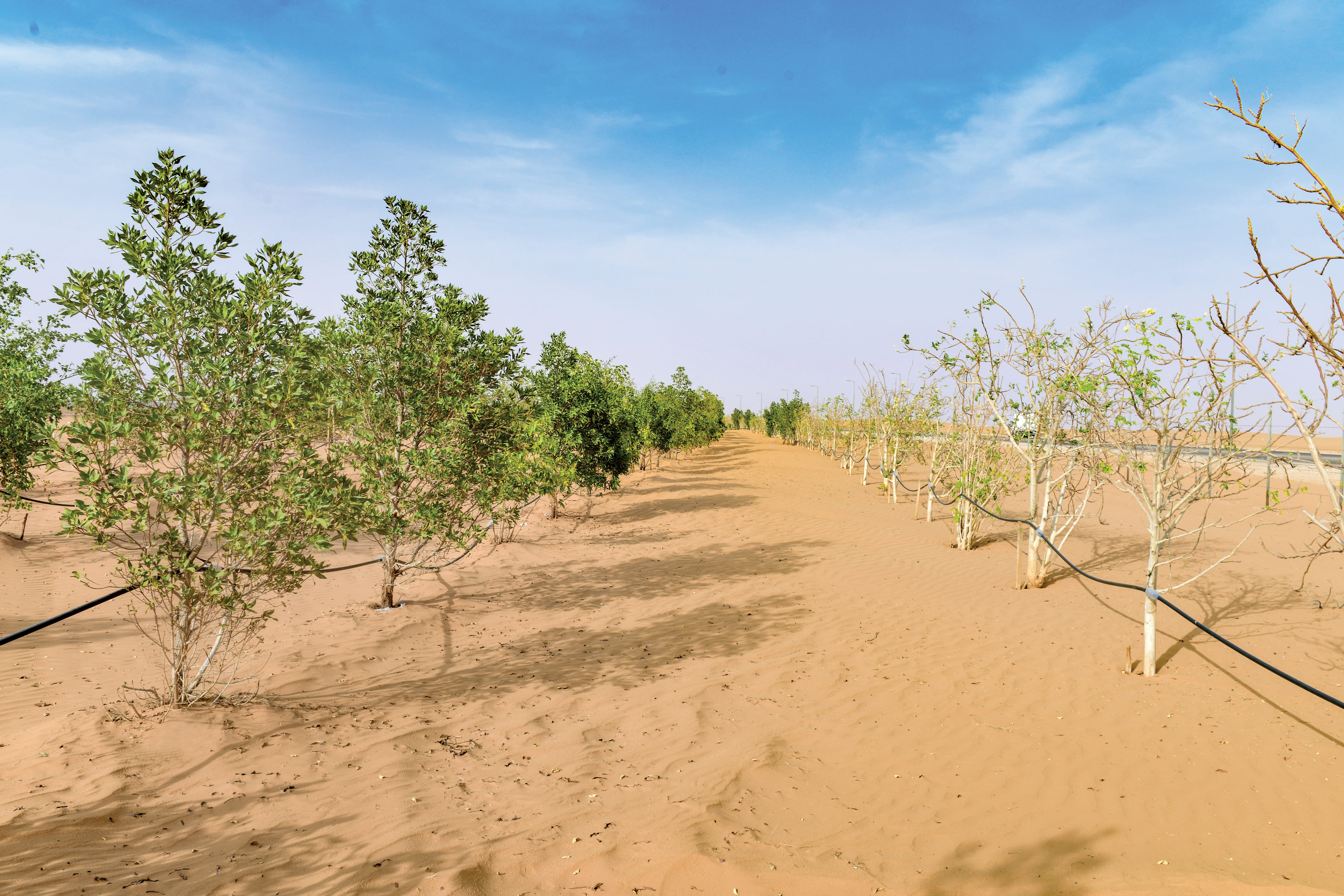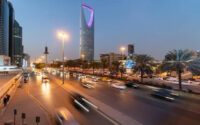Reducing desertification with native trees

Reducing sand movement and desertification is a key component to Saudi Aramco’s initiative to plant one million trees, whereas KhPD will plant 15,000 native trees by the end of 2019.
Reaching out of the desert sands along many of the site’s roads, rows of enduring Zizyphus spina-christi acacia (Sidr), Acacia gerrardii (talh) and Prosopis koelziana trees defy the dry conditions, deftly sprouting life-giving leaves, branches, and roots.
As well as enhancing native biodiversity, the trees sequester carbon, control sand drift onto the roads, and create natural shade.
Khurais is evaluating the impact of different tree plantation technologies on water consumption, growth rate, and cost-effectiveness in two phases.
During phase one, implemented in 2015, a super absorbent polymer technology was tested on 3,400 trees, generating up to 50% savings in irrigation water consumption.
The positive outcome of phase one encouraged KhPD to work with Aramco’s Environmental Protection Department and EXPEC ARC to proceed with phase two, which involves piloting four different technologies on 400 trees, comparing water conservation and growth rate performances, with the trial outcomes expected by the end of 2019.
“Khurais biodiversity initiative demonstrates the unwavering commitment toward environmental sustainability and it will remain in our organization’s DNA as part of our national interests, corporate drives, and social responsibilities,” said Fahad M. Al Abdul Kareem, general manager of Southern Area Oil Producing.
“This includes deploying technologies to support water conservation measures, such as the plantation technology trials taking place at Khurais.”





 Email: info@cyber-gear.com
Email: info@cyber-gear.com